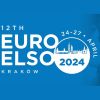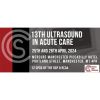HealthManagement, Volume 16 - Issue 3, 2016
2D/3D Imaging on a Dedicated Prone Breast Biopsy System
Breast tomosynthesis imaging, Hologic calls it 3D mammography™, is proving to be the best modality for breast cancer imaging. The Hologic tomosynthesis system has demonstrated superior clinical performance to conventional 2D mammography in a number of metrics, in particular showing improved detection of invasive cancers and reductions in recall rate. Now Hologic is offering their tomosynthesis technology on a dedicated prone breast biopsy system.
The new CE-marked Affirm™ prone biopsy system provides enhanced 2D/3D biopsy imaging and faster, easier access to the breast. The new product is an important step forward in biopsy technology — allowing doctors to better target lesions found with 3D mammography™ exams, as well as other screening modalities — with exceptional imaging, improved workflow and seamless, 360-degree access to the breast.
Clinicians prefer prone systems for breast biopsies
Thousands of clinicians worldwide prefer prone patient positioning instead of upright systems for breast biopsies as prone systems support the patient stably throughout the procedure while isolating them from the biopsy needle. This provides a better overall patient experience. Alejandro Tejerina, M.D., a radiologist with the Centro de Patologia de la Mama, Tejerina Foundation, in Madrid, Spain, one of the first adopters of the new Affirm™ prone system, reports that the feedback from the first wave of patients is very positive.
“We have been suffering to handle complex biopsies of subtle lesions like faint calcifications or distortions that we were only able to see on 3D images,” Dr. Tejerina says. “Older breast biopsy systems are restricted to 2D imaging with a narrow window for targeting the lesions. Often they required multiple x-ray exposures to find and position the suspect tumor for the biopsy needle. With tomosynthesis imaging on the new Affirm™ prone system, there is a much wider field of view, the biopsy device can be positioned anywhere in a 360-degree circle, and areas of suspicion seen only with 3D imaging can be easily biopsied.” On the previous Hologic biopsy table the biopsy device had to be positioned manually, "the new system does this for us automatically, which saves time,” Dr. Tejerina says. “The software really streamlines our workflow, so the procedure goes faster.” The new Affirm™ Prone table uses translucent paddles and a wider detector. “This helps us see lesions in the first scout and significantly reduce the number of images needed to get to the lesion.”

Helping the Centre Lead in Breast Health
The Centro de Patologia de la Mama, Tejerina Foundation has been leading the way in women’s breast health for over 40 years. In 2000, the Centre pioneered the use of digital mammography in Spain. The Centre was first center in Spain to install a stereotactic guided prone biopsy table in 1997. In 2010 the Centre installed a Hologic Selenia® Dimensions® breast tomosynthesis system, the first site in Spain to use the innovative technology. In 2010 the Centre was also the first site in Spain to combine the Hologic Affirm™ upright biopsy system with the Hologic tomosynthesis system. In 2015 the Centre began offering Hologic’s I-View™ contrast enhanced 2D imaging along with a 3D scan, further increasing the value of a contrast mammography procedure.
The new Hologic Affirm™ prone biopsy system significantly expands the Centre’s breast biopsy portfolio and keeps the Centre in the lead in offering the latest in breast health services to the women of Spain.















